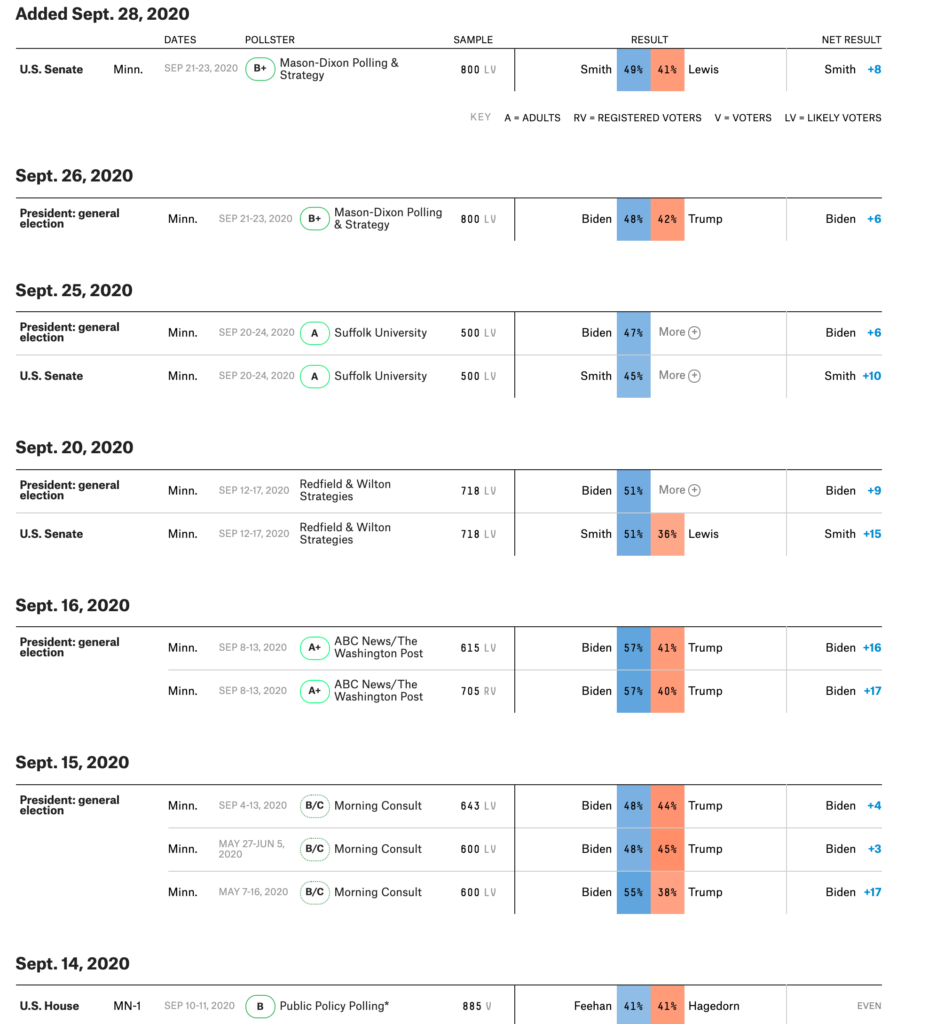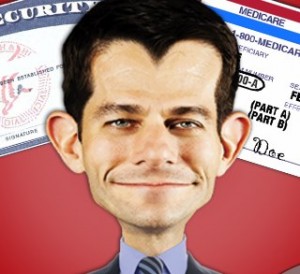Why is Trump obsessed with investing so much time and money in Minnesota?
Last night’s Trump rally in Duluth was old hat for us. The visits from Trump and surrogates are non-stop, and the incendiary attack ads are wall-to-wall.
Yes, I understand that in 2016 Hillary only won Minnesota by 44,593, or 1.5 percent. Yes, I realize that there are “soooo many Trump signs up in rural areas,” where “real Minnesotans” live. Yes, I realize the Iron Range is continuing to evolve into a reliably red East Dakota or North Kentucky, politically speaking.
But still, the data from 2020 just don’t look all that encouraging for Trump, or puppets such as U.S. Senate candidate Jason Lewis. Despite all of those massive Trump signs in rural areas, 55% of Minnesota’s population is in the Twin Cities metropolitan area, and Biden is doing well there. Here are the most recent polls, aggregated by fivethirtyeight.com:

(P.S. The Star Tribune/KARE-11/MPR poll published on September 26 had Biden ahead 48 percent to 42 percent, with eight percent undecided. It has Trump’s approval rating at 43 percent. Not sure why fivethirtyeight.com didn’t list that one, but that poll is consistent with the average of these other polls.)
As we all know, the 2016 polls didn’t match up with the 2016 results on Election Day, though for the most part the difference was within the polls’ statistical margins-of-error, or nearly so. It’s important to note that these most recent findings in 2020 are mostly outside the margin-of-error.
To be clear, I’m not saying Minnesota is a sure thing for Biden. The margins shown in these polls are not insurmountable, particularly if Trump continues to dump a disproportionate amount of time, money, lies, and voter suppression efforts here over the next 33 days.
But if these numbers qualify Minnesota as one of the most hopeful swing states in Trumpland, how bad must the other swing states look for Trump?


